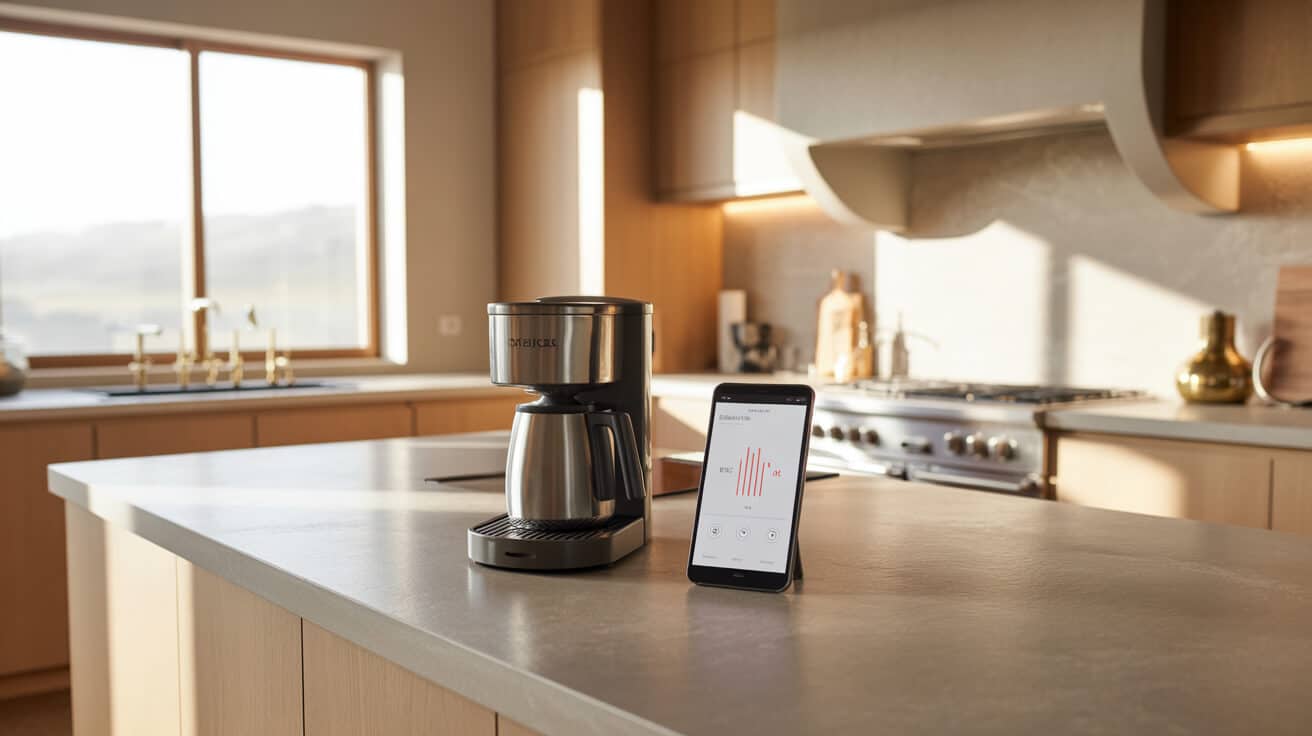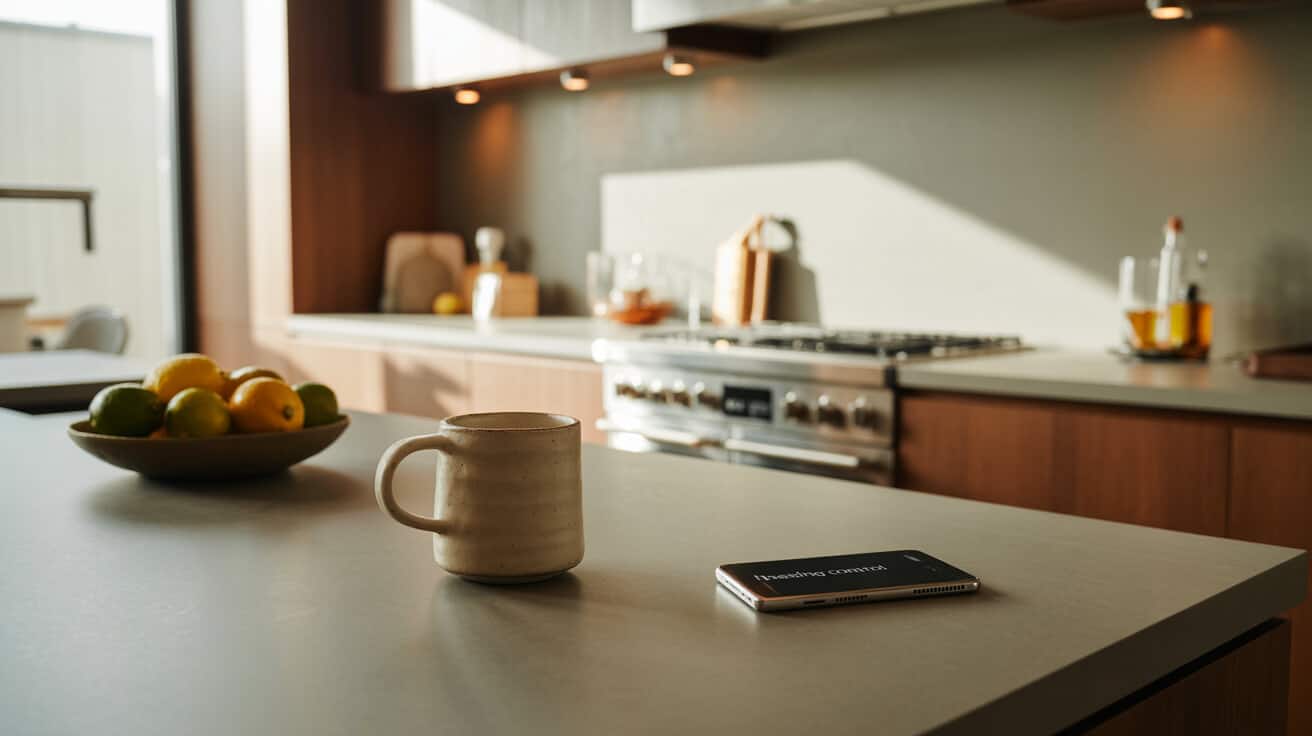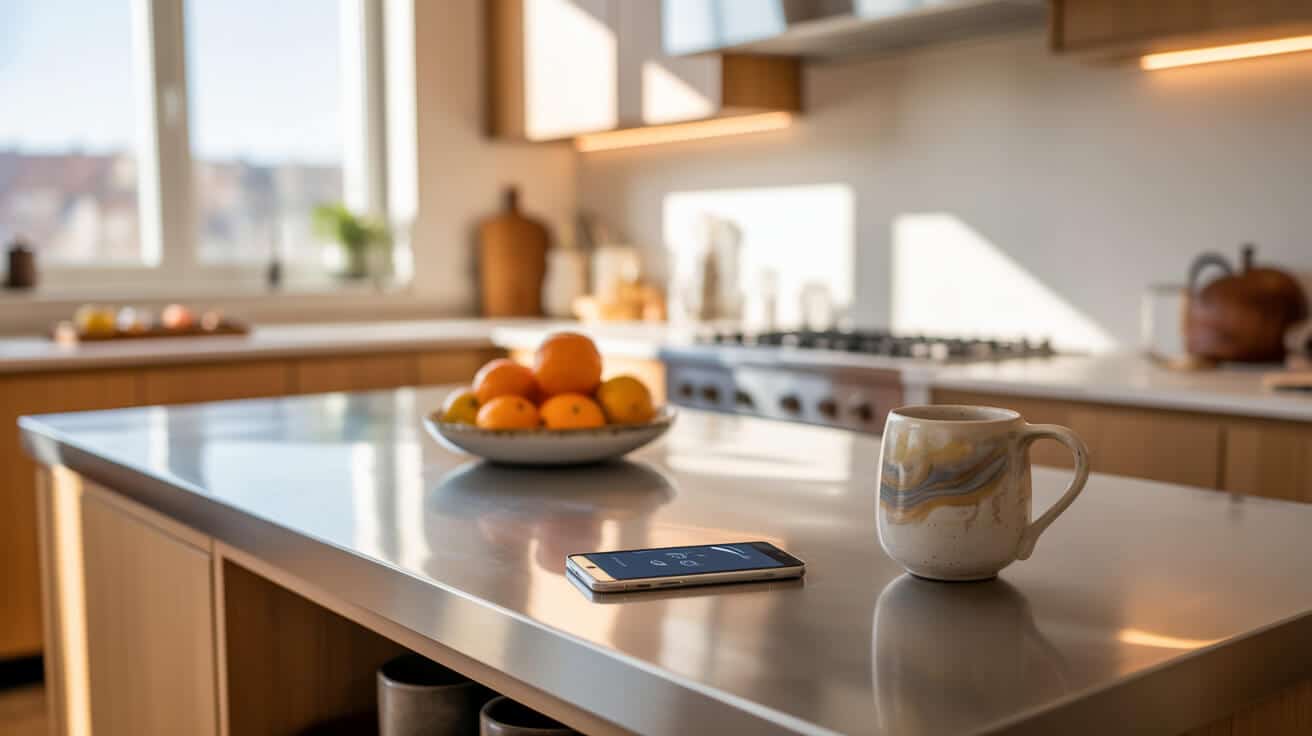The use of smartphone controlled underfloor heating combines technical sophistication with a new paradigm of user empowerment and operational transparency. It enables property managers, landlords, and owners to adjust any room’s climate from anywhere, track consumption and efficiency, and automate schedules based on occupant or business needs. For your company or residential property, such solutions offer a blend of comfort, energy management, and preventative maintenance, in line with contemporary sustainability and user-experience benchmarks. Installation and ongoing support are frequently managed by specialised plumbing and heating providers, who help ensure regulatory compliance and optimal integration within diverse property portfolios.
Etymology or name origin
The composite phrase “smartphone controlled underfloor heating” marries the modern digital realm—embodied by the “smartphone,” a programmable, app-driven communications device—with the legacy of “underfloor heating,” a method that dates back to ancient architectural innovations but now commonly refers to radiant heating systems located beneath flooring materials. The expansion of terminology into “smart UFH” or “app-managed heating” reflects rapid linguistic evolution, media adoption, and consumer familiarity with remote and digital interfaces.
Overview / context
The digitalization of indoor climate control
Property climate management, once a function of manual or analogue systems, now often features multifaceted digital environments. In smartphone controlled underfloor heating, the command layer sits in the palm of your hand, enabling granular, real-time changes and deployment of programmed schedules that adapt to your daily rhythm or operating hours.
Role of plumbing and heating companies
Specialised companies are tasked with integrating physical heating infrastructure with digital platforms, providing commissioning, user onboarding, and specialist maintenance. With firms such as Plumbers 4U, your implementation is supported by both mechanical expertise—selection of suitable manifolds, heat sources, and underfloor piping—and digital fluency spanning wireless protocols, app pairing, and regulatory documentation.
Shaping market expectations
Driving adoption is a constellation of external and internal motivators: rising fuel costs, tighter carbon mandates, tenant and occupant expectations for customizable environments, and the enhanced service promise provided by connected property solutions.
History
Origins
Radiant heating, including underfloor channels fueled by hypocaust ovens, can be traced back to classical Roman and Korean architecture. For centuries, such systems required on-site management—replenishing heaters, adjusting vents, or relying on crude controls. The 20th-century shift to hot water and electric floor systems brought thermostatic switches and, gradually, the first digital interfaces.
Industrial emergence
The pervasive diffusion of wireless technology and digital miniaturisation in the late 1990s and early 2000s took the field further. Thermostatic zone valves and programmable controls allowed professionals to stitch together sophisticated wiring networks, but meaningful remote control awaited broader connectivity. As the smartphone became ubiquitous, manufacturers responded with proprietary applications capable of integrating with home Wi-Fi and, later, cloud services.
Contemporary evolution
Today’s smartphone controlled underfloor heating systems feature learning algorithms, multi-user permissions, and the ability to link with whole-home automation. Commercial providers, including Plumbers 4U, may instal systems that log performance for compliance verification, automatically update firmware, or issue customised reports for corporate asset management. The ongoing convergence of plumbing, heating, and information technology permeates design, installation, and regulatory frameworks.

Concept / description
System architecture
Modern smartphone managed underfloor heating comprises three modular domains:
- Heat delivery and distribution
- Hydronic setups feature a boiler or alternative heat source, manifold, and a network of pipes beneath finished floors, distributing heated water at regulated temperatures.
- Electric models rely on cable or mat arrays, drawing power directly, regulated by relays and smart thermostats.
- Control and sensory network
- Smart thermostats, cabinet or inline sensors for temperature and humidity, actuators embedded in zoning manifolds, and a bridging controller interface with digital networks.
- Control units equipped with Wi-Fi, Zigbee, Z-Wave, or proprietary protocols pair with your home or business internet, facilitating messaging between user logic and hardware response.
- Mobile and cloud interface
- Applications on smartphones or tablets communicate with the heating system for both direct commands and scheduled routines.
- These apps provide dashboards for consumption analytics, scheduling, fault reports, and—where permitted—integration with broader digital ecosystems such as Amazon Alexa, Google Home, or Apple HomeKit.
Mechanisms of interaction
The operational feedback loop is bidirectional:
- Input (user or automated): adjusting setpoints, scheduling zones, activating away/eco modes.
- Output (system response): modulating actuators, relaying performance data, pushing maintenance or anomaly notifications to your device.
Physical and technical composition
Installations often layer:
- Insulation beneath heat elements for efficiency.
- Subfloor sensors for safety and precision.
- Dedicated control wiring or wireless relay points connecting to distribution cabinets or sensor hubs.
Your choice of hardware, app ecosystem, and integration scenario informs installation techniques, training requirements, and the available suite of features.
Functionality / purpose / applications
Residential applications
For homeowners, app-enabled UFH provides flexibility: regulate each room or entire floors, set customised weekly schedules, and adjust heating from outside your property. Families can set child-safe temperature limits or vacation modes that reduce energy usage during holidays. These features, delivered by providers such as Plumbers 4U, enhance comfort, security, and your control over household spending.
Commercial and institutional settings
Facilities managers use centralised apps to oversee large office portfolios, universities, or healthcare centres, leveraging:
- Multi-site management from a single mobile dashboard.
- Smart zoning for conference halls, corridors, or public-use areas based on real occupancy data.
- Automated maintenance alerting and regulatory reporting.
Rental and multi-tenancy
Landlords and letting agents gain:
- The ability to pre-authorise or remotely reset heating schedules.
- Retrospective diagnostic data to evidence compliance with comfort and safety standards.
- Integration with tenant-facing apps, allowing permission-based access.
Automation and adaptive use
Adaptive learning features detect patterns—such as occupancy peaks, weather shifts, or usage anomalies—enabling the system to adjust pre-emptively and maintain target comfort with lower energy input.
Classifications / types / variants
Hydronic versus electric systems
| Factor | Hydronic UFH | Electric UFH |
|---|---|---|
| Heat source | Boiler, heat pump, solar, or hybrid | Grid power, PV supplement |
| Core components | Pipe network, manifold, pumps, mixing valves | Heating mats or cables, relays |
| Control method | Actuators (per zone), smart or manual thermostats | Smart thermostats, relay control |
| Suitability | New builds, large retrofits, long-term savings | Smaller spaces, rapid installation |
App-only, hybrid, and ecosystem models
- App-only systems: Control via smartphone is exclusive; local manual override may be absent or managed via touchscreen displays.
- Hybrid models: Combine traditional thermostatic and digital control.
- Ecosystem models: Open-standards or API-driven frameworks that interlink with external automation or third-party analytics.
Single-vendor vs. open-platform
- Single-vendor (e.g., proprietary Plumbers 4U bundle) ensures compatibility and easier support but may restrict future device choices.
- Open-platform models trade ease for potential cross-compatibility, valuable to large organisations or multi-property managers seeking vendor flexibility.
Systems / tools / methodologies
Survey and assessment
Comprehensive initial survey ensures best-fit system:
- Assessing subfloor insulation, property layout, existing heating, and digital infrastructure.
- Best practice involves simulated heating models for complex commercial spaces or heritage property retrofits.
Installation workflow
- Prepare subfloor: level, insulate as specified.
- Lay and connect pipes (hydronic) or mats/cables (electric).
- Instal, pair, and test sensors, relays, and network components.
- Pressure/leak test (hydronic only).
- Commission system via the control app, mapping zones and initial programmed setpoints.
- Train authorised users.
Commissioning and logbooks
Digital commissioning, handled via app or cloud dashboard, records serial numbers, test results, firmware versions, and installer notes, fulfilling both warranty and regulatory requirements. Plumbers 4U maintains digital service records for streamlined reporting and maintenance scheduling.
Ongoing service and maintenance
- Firmware/software updating in coordination with manufacturer rollouts.
- Philtre cleaning, periodic pressure testing, or diagnostic scan.
- On-demand troubleshooting using system logs to isolate device and protocol issues.
Training and user onboarding
Effective onboarding ensures buyers and users extract full value:
- In-app tutorials, onboarding checklists, or personalised developer walkthroughs.
- Plumbers 4U offers user support and refresher training as part of long-term service agreements.

Stakeholders / entities involved
Specialised plumbing & heating companies
Installers pioneer physical system design, digital setup, and compliance validation. Services from Plumbers 4U span consultation, design, fitting, ongoing remote monitoring, and periodic in-person inspection tuned to your property’s needs.
Property owners and facility managers
Maximise energy savings, user comfort, asset longevity, and compliance tracking through real-time data analytics and customised access hierarchies.
Residents and tenants
Benefit from user-friendly applications, immediate adjustments, and peace of mind stemming from transparent, responsive heating systems.
Regulators, certifiers, and manufacturers
Oversee installation standards, logbook completeness, and service transparency. Manufacturers support security, interoperability, and continuous improvement cycles, shaping local guidelines through active engagement with regulators and end users.
Legal / regulatory / ethical considerations
Built-environment regulations
Installations must comply with:
- Part L (energy performance)
- Part P (electrical safety)
- WRAS approval for water fittings
- G3 certification for unvented systems interfacing with heating
Third-party inspection and self-declaration may be part of audit protocols, especially in rental or multi-use settings.
Manufacturer and warranty policies
Warranty eligibility depends on professional installation, serial number registration, annual maintenance, and firmware compliance—traditionally managed by your provider.
Data privacy and user consent
User and property data (temperature logs, access patterns) are regulated under GDPR frameworks. Companies bear responsibility for transparent user agreements, encrypted data transfer, periodic security reviews, and clear consent processes for all data-intensive features.
Service benchmarking and compliance
Service logs—including installation photos, commissioning certificates, and ongoing diagnostics—verify compliance for insurers and local authorities.
Performance metrics / data / measurements
Real-time analytics dashboards
Smartphone apps present core metrics:
- Zone-by-zone energy consumption
- Historic and forecasted usage patterns
- System response time to user commands
- Average temperature variances
Diagnostic and maintenance metrics
Tables may detail firmware versions, battery status, Wi-Fi signal strength, sensor health, or downtime per diagnostic event.
| Zone | Energy Use (kWh) | Response Time (min) | Issue Alerts | Firmware |
|---|---|---|---|---|
| Ground Floor | 42 | 4 | None | 1.21 |
| Top Floor | 28 | 3 | Battery Low | 1.21 |
| Kitchen | 17 | 2 | None | 1.21 |
Reporting for compliance and optimization
Annual energy consumption, EPC improvement, and maintenance logs are available to your organisation, regulatory authorities, and tenants as necessary.
Challenges / barriers / limitations
Installation and retrofit limitations
Retrofitting is more complex in properties without prior planning for underfloor systems, requiring significant subfloor work or acceptance of raised floor levels. Hybrid systems and wireless relay-based models can address this, though site survey is essential for risk management.
Technical and operational complexities
- Wireless interference, app-protocol mismatches, or proprietary lock-in can delay deployment.
- Firmware updates (if interrupted) may disable scheduling or require technical rollback.
User engagement and accessibility
User onboarding must take account of occupant demographics, language, and special needs. Designing for universal accessibility remains a challenge that providers are seeking to address—with in-app accessibility options and multi-modal input.
Economic trade-offs
Capital expenditure for cutting-edge systems may be offset by long-term gains in energy bills, improved asset value, and marketability. Financial support for energy upgrades (via grants or landlord schemes) is increasing.
Cybersecurity and reliability
Securing device endpoints and communication channels involves network segmentation, regular patching, and monitoring for anomalies. As digital infrastructure in buildings expands, so do avenues for intrusion, demanding vigilance from your provider.
Environmental and energy efficiency constraints
Poor insulation, inadequate commissioning, or neglect of zone programming can blunt system gains. User education and annual maintenance reinforce optimal operation.
Impact / influence / legacy
Smartphone controlled underfloor heating is redefining expectations about comfort, responsiveness, and cost control in homes and workplaces. The proliferation of user-friendly interfaces, predictive maintenance, and detailed usage analytics drives adoption among property professionals and owner-occupiers alike. For your company, integration means not just greater oversight and regulatory clarity, but an accelerated journey toward sustainability metrics and operational flexibility.
Professionals and residents encounter an evolved service relationship, with on-demand support and transparent feedback loops replacing legacy modes of complaint-driven repair. The legacy of these systems resonates with the emergence of environmental benchmarking, automated compliance, and the normalisation of user-controlled comfort as an essential amenity.
Future directions, cultural relevance, and design discourse
Cross-vendor interoperability, predictive climate control, and low-carbon integration will define the next evolution. As manufacturers open protocols, your company will select among platforms providing seamless integration with solar or heat pump systems, predictive response to utility pricing, and AI-driven adaptation to your use cycle. Policy incentives, from ECO4 to net-zero mandates, will shape adoption among both new construction and retrofit audiences.
Cultural discourse is shifting: underfloor heating is moving from a “premium” option to a widely expected standard for energy-efficient, owner-driven comfort. In parallel, design communities are exploring the intersection of adaptive technology, privacy, and the cultural meaning of “climate autonomy” within inhabited space. For service providers, continuous improvement in technology, user interface, and end-to-end reliability will remain an ongoing commitment amid rapidly changing market and regulatory landscapes.

